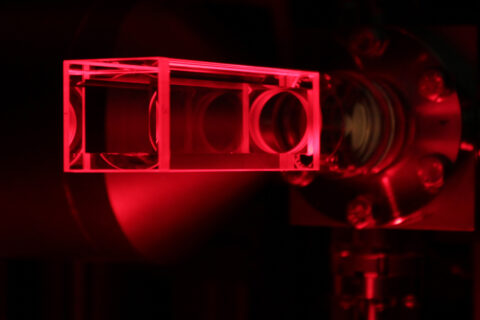Physicists observe individual atomic collisions during diffusion for the first time
In the world of research, diffusion is understood as a process in which tiny particles uniformly disperse throughout a gas or liquid. Although these media are made up of individual particles, diffusion is perceived as a continuous process. To date, the effects of an individual collision between particles – the cornerstone of diffusion – have never been observed. Now physicists in Kaiserslautern and Erlangen have succeeded in observing the fundamental steps of diffusion by individual atoms in a gas and have provided a theoretical description of this mechanism. The study has been published in the prestigious journal Physical Review Letters.
Almost two hundred years ago, the Scottish doctor and researcher Robert Brown observed that particles of pollen quiver as they move through a liquid. Tiny particles, such as molecules or atoms, exhibit similar behaviour as they disperse within gases and liquids. The particles show a zigzag pattern of movements resulting from a huge number of random collisions, causing various substances to mix. Scientists refer to these zigzag movements as “Brownian motion” and to the dispersion and mixing of various substances as diffusion.
“Diffusion is a key phenomenon in many areas of science and forms the basis for numerous transport processes, for example in living cells or energy storage devices,” says Professor Artur Widera, who conducts research into the quantum physics of individual atoms and ultra-cold quantum gases at TU Kaiserslautern”. “That’s why it’s important to have an understanding of diffusion processes in almost every area of the life sciences, from the natural sciences through to technological development.”
A simplified understanding of diffusion can be obtained by disregarding the individual collisions between particles. “In this context, we also talk of a continuous medium with, for example, a larger particle diffusing into it. This simplification becomes all the more accurate as the mass of the particles in the medium becomes smaller and the frequency of collisions becomes higher,” says Dr Michael Hohmann, a researcher in Professor Widera’s group who is first author of this study. One everyday example is fog, which can also be viewed as a medium of this kind, although it actually consists of tiny individual water droplets.
For their experiment, the physicists led by Widera tweaked the conditions that characterise a continuous medium: “Instead of large particles, such as pollen, we studied the diffusion of individual atoms that have almost the same mass as atoms of the gas. Furthermore, we used a very cold, dilute gas to drastically reduce the frequency of collisions,” explains Hohmann. By doing so, the Kaiserslautern-based researchers observed, for the first time, how caesium atoms diffuse at a temperature close to absolute zero in a gas made up of rubidium atoms. “These are temperatures that you cannot create in a refrigerator, so we used laser beams to cool the atoms and hold them in place in a vacuum apparatus. This slowed the diffusion down to such an extent that the effect of individual collisions could be observed,” explains Professor Widera with regard to the experimental setup.
For the theoretical description of the experiment, the researchers in Kaiserslautern were assisted by their colleague Professor Eric Lutz, a professor of theoretical physics at Friedrich-Alexander-Universität Erlangen-Nürnberg (FAU), who helped them develop the mathematical model. “With the new model, we can now describe the motions of the atoms more accurately,” says the Erlangen-based researcher.
Together they showed that it is sufficient to alter the coefficient of friction in the theoretical calculation of the continuous model. By doing so, it is also possible to describe cases that do not involve a continuous medium as in the above experiment. Examples of such cases include when aerosols – mixtures of suspended particles – disperse in thin layers of air in the upper atmosphere, in interstellar space or in vacuum systems.
The researchers’ findings may be significant in understanding phenomena such as the dispersion of aerosols in the atmosphere or of gases in vacuum systems.
The publishers of the journal Physical Review Letters highlight the study as an especially interesting and noteworthy article and have published it as an Editor’s Suggestion: “Individual tracer atoms in an ultracold dilute gas.“
Further information:
Prof. Dr. Eric Lutz
Phone: +49 9131 8528459
eric.lutz@fau.de
